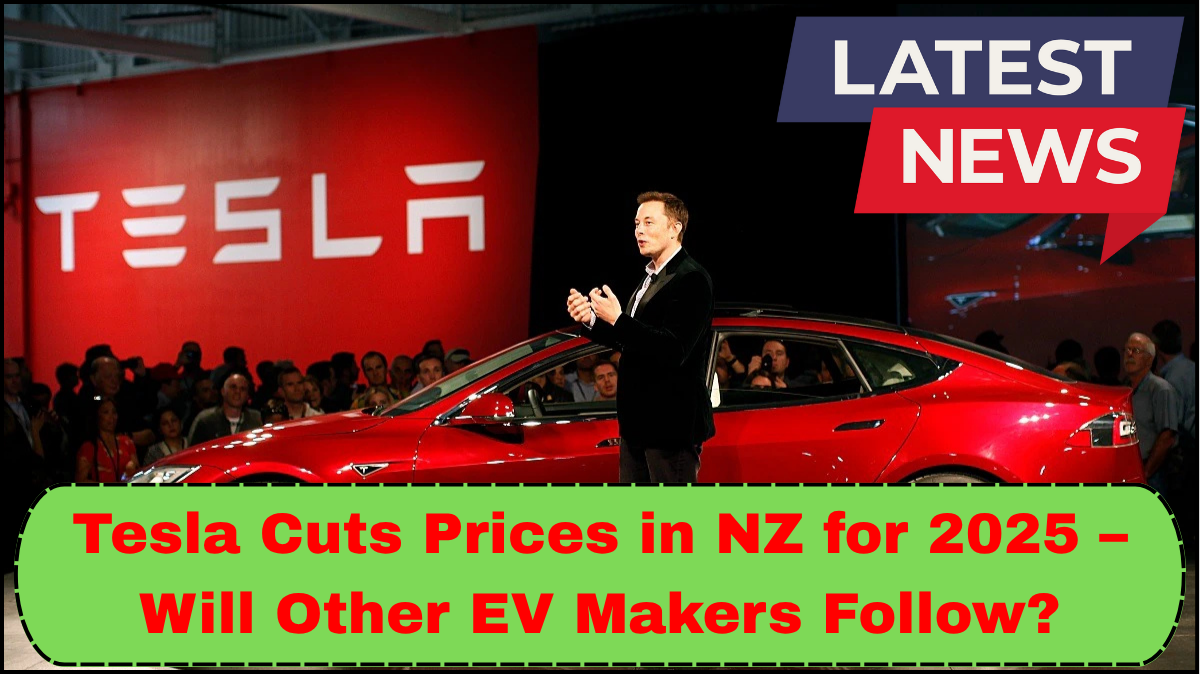Tesla has officially slashed its prices in New Zealand for 2025, signaling a bold move in the country’s rapidly evolving electric vehicle (EV) landscape. The price drop has already begun to shake up consumer expectations and could force competing EV manufacturers to rethink their strategies.

The Price Drop: A Strategic Shift
The Tesla price drop in NZ 2025 includes reductions across the brand’s core lineup, particularly affecting the popular Tesla Model 3. Depending on the variant, the price cuts range from NZD $4,000 to $8,000. This change is not just a marketing tactic—it reflects Tesla’s global push to make EVs more affordable and accessible.
For instance, the entry-level Model 3 now starts at under NZD $65,000, bringing it closer to price parity with traditional internal combustion engine vehicles. Tesla has achieved this through a combination of cost-efficient manufacturing, increased production capacity, and optimization of supply chain logistics.
Why New Zealand?
New Zealand is becoming a prime target for EV expansion due to its aggressive clean energy policies and growing demand for low-emission vehicles. The government’s Clean Car Discount and other incentives have boosted EV sales significantly over the last two years. Tesla, recognizing the opportunity, aims to solidify its dominance by leading the pricing game.
Moreover, New Zealand’s geography and population density are well-suited for EVs. Most drivers cover short daily distances, making range anxiety less of a concern. The country’s renewable-heavy electricity grid also enhances the environmental appeal of owning an EV.
Impact on the EV Market Shift
This price reduction is more than a sales tactic—it’s a potential catalyst for a broader EV market shift. When a market leader like Tesla slashes prices, it sends ripples across the entire industry.
Other automakers such as BYD, Hyundai, and Nissan, which have gained traction in New Zealand’s EV segment, may be compelled to follow suit or risk losing market share. If they don’t respond with either competitive pricing or superior features, Tesla could further tighten its grip.
What Does This Mean for Consumers?
For consumers, the Tesla price drop in NZ 2025 translates into greater affordability and more options. Buyers who were previously on the fence may now see Tesla models, particularly the Model 3, as financially viable. The reduction in entry-level prices could attract a wider audience, including first-time EV buyers.
Additionally, as more EVs enter the used market due to increased sales of new models, overall accessibility to electric transportation will improve. This has the potential to accelerate the nationwide transition from petrol and diesel vehicles to sustainable alternatives.
Could This Influence Policy?
Governments watch market trends closely. A significant shift in pricing and consumer behavior could prompt policymakers to revisit incentive schemes or charging infrastructure plans. If Tesla’s move triggers a surge in EV adoption, we might see an expansion of government-backed EV benefits or faster investment in charging networks.
Are Other EV Makers Likely to Follow?
It’s probable. Competitive dynamics typically dictate that when a leading brand adjusts its pricing, others must adapt. However, not all companies can afford to match Tesla’s scale or cost efficiencies. Legacy automakers often rely on traditional dealership models and may face higher production costs, making such price cuts harder to replicate.
Yet brands like BYD and MG, which operate with leaner supply chains and aggressive pricing models, might attempt to close the gap. The next few quarters will be crucial in observing how the EV landscape evolves in New Zealand.
FAQs
Q1: What is the new starting price of the Tesla Model 3 in NZ for 2025?
A1: The entry-level Tesla Model 3 now starts at just under NZD $65,000, depending on configuration.
Q2: Why did Tesla lower its prices in New Zealand?
A2: Tesla aims to boost affordability, increase market share, and support its global mission of accelerating the transition to sustainable energy.
Q3: How does this impact other EV manufacturers?
A3: Competing brands may need to lower their prices or add value to stay competitive, potentially triggering a wider EV market shift.
Q4: Will this influence government EV policies in NZ?
A4: It could. A rise in EV sales may lead to expanded incentives or faster development of infrastructure to support the growing EV population.
Q5: Are there any downsides to the price cuts?
A5: While generally positive, the lower price could impact Tesla’s profit margins and may pressure other brands financially, especially those with less efficient production models.
click here to learn more